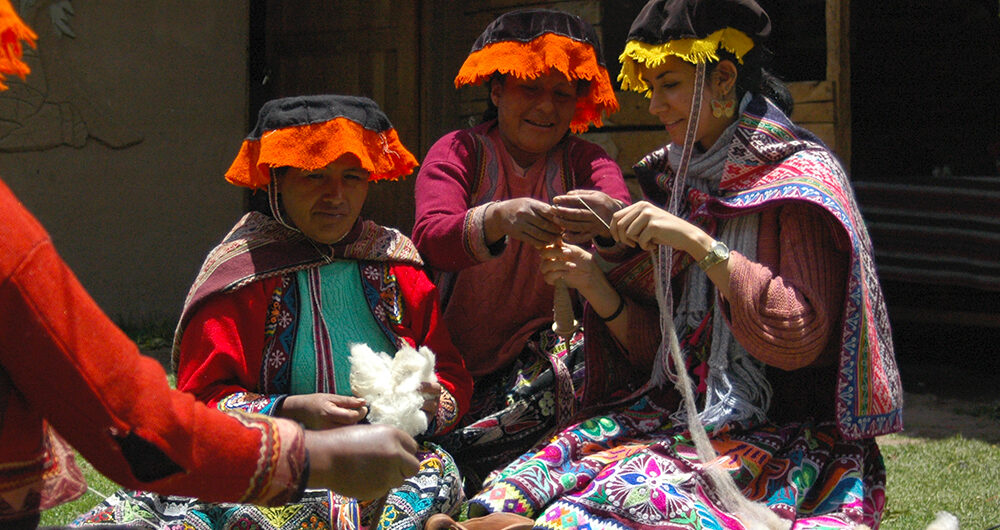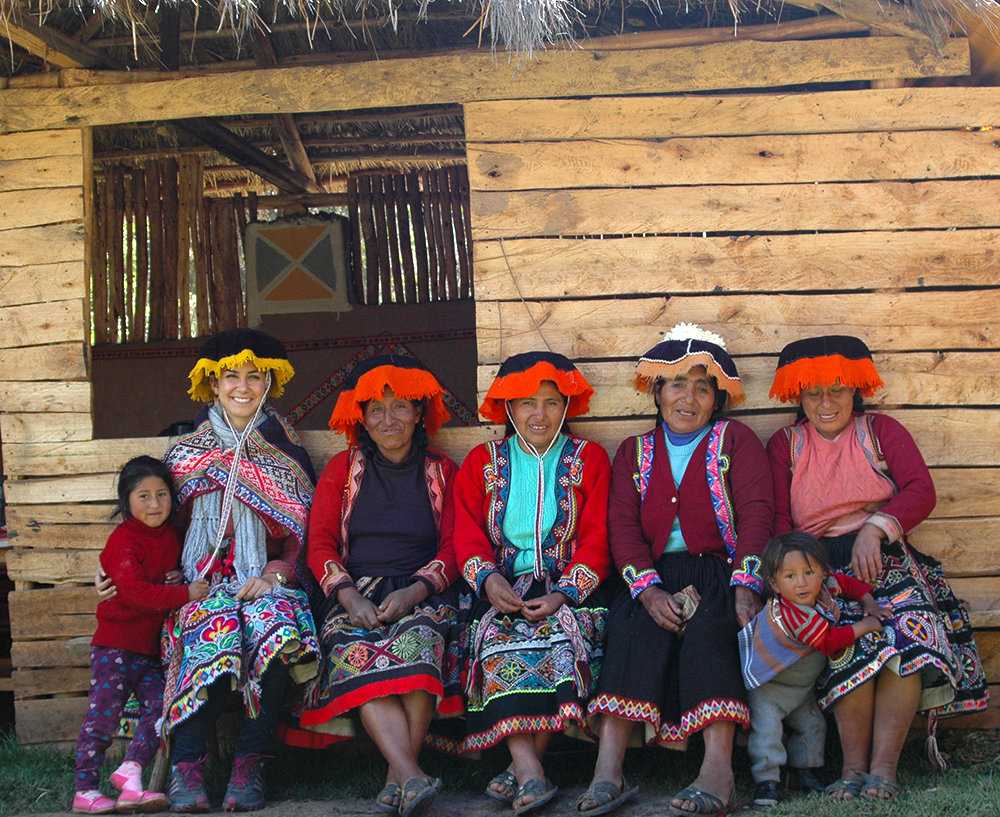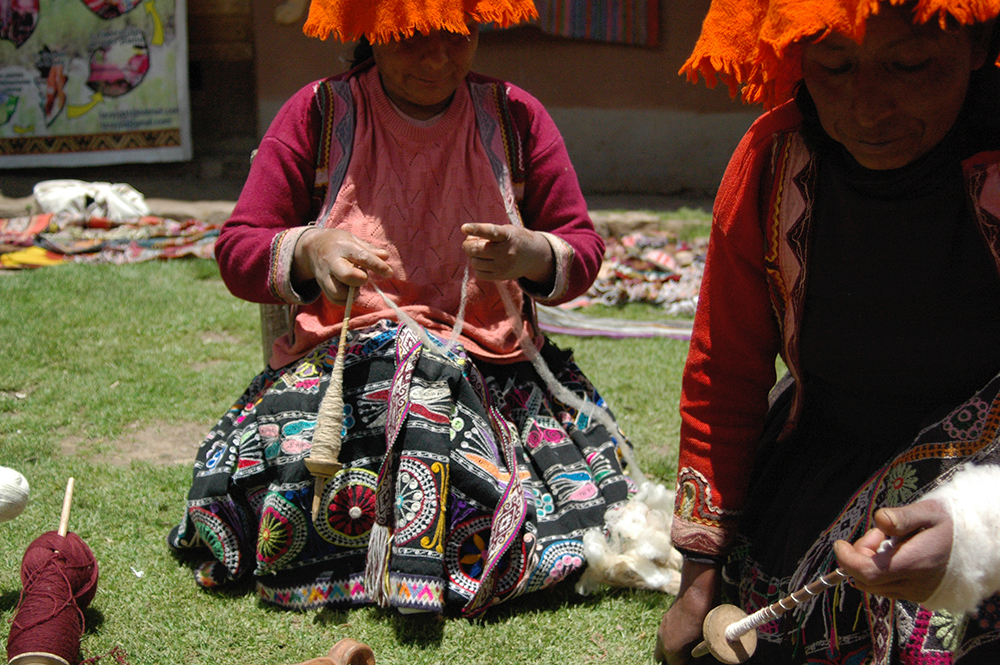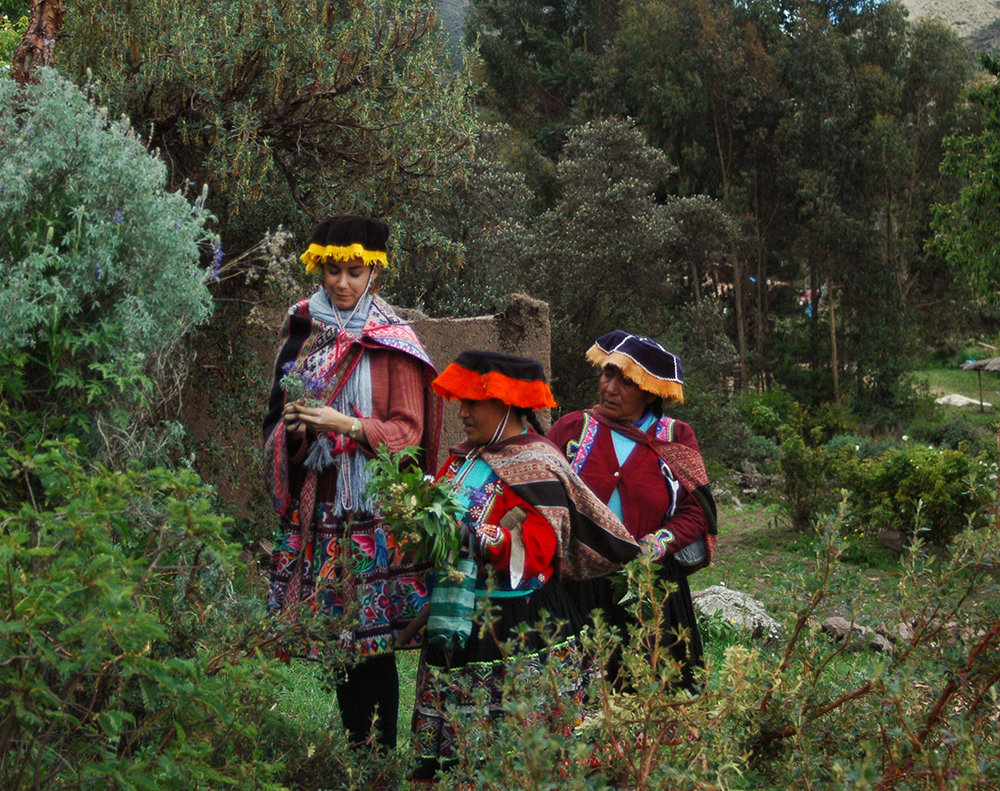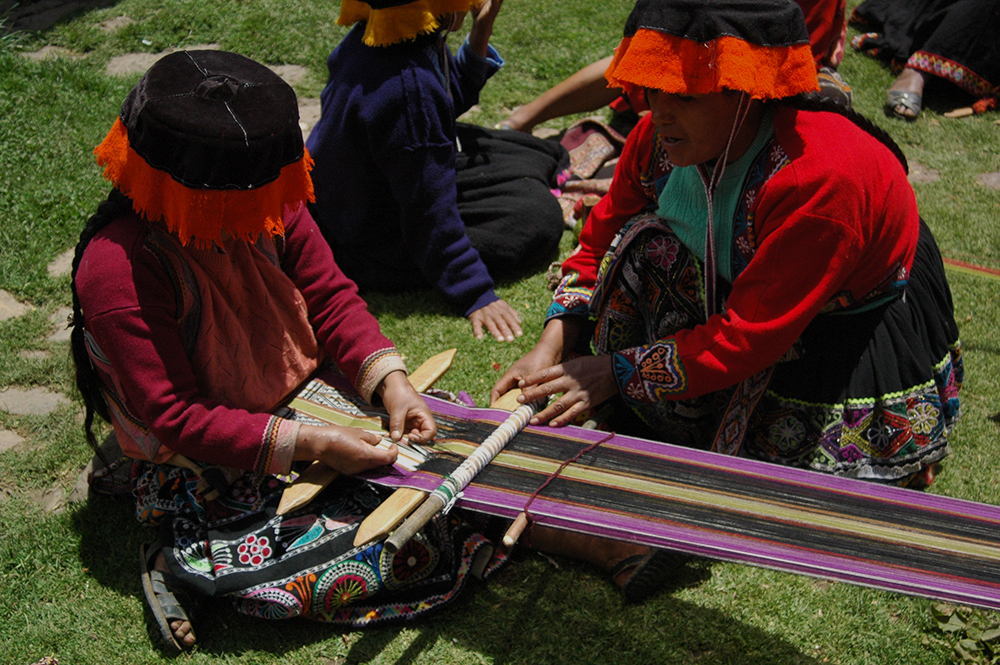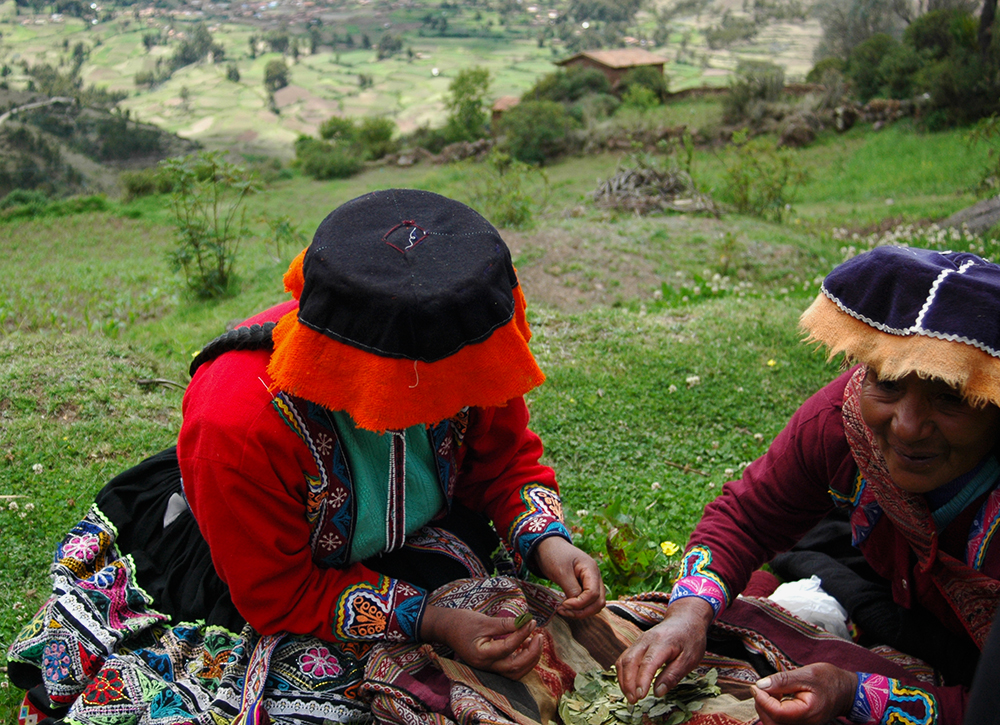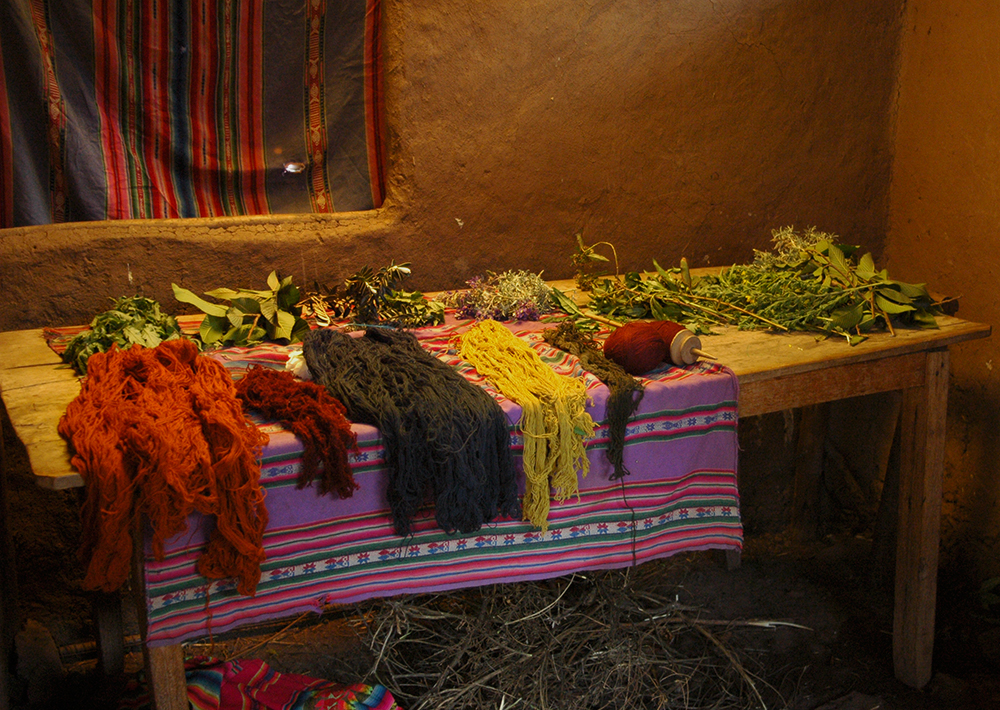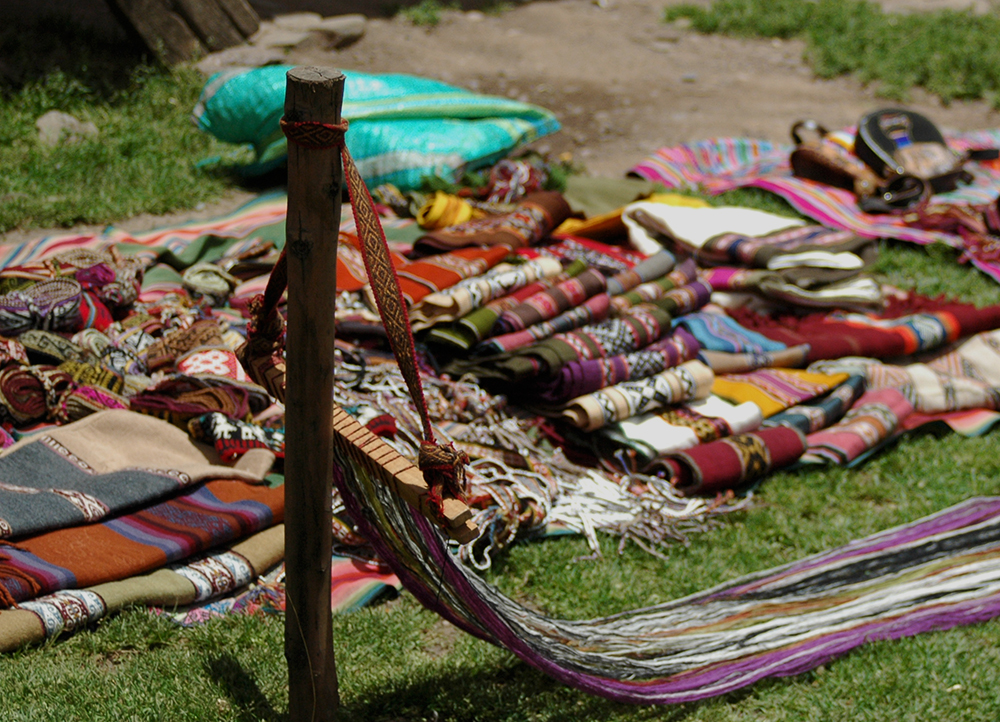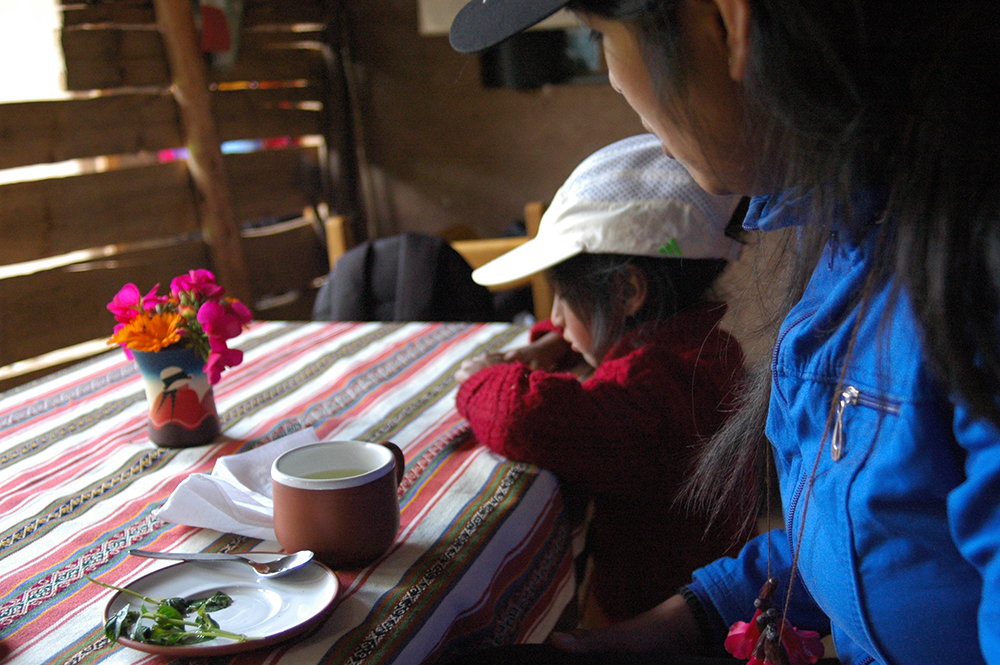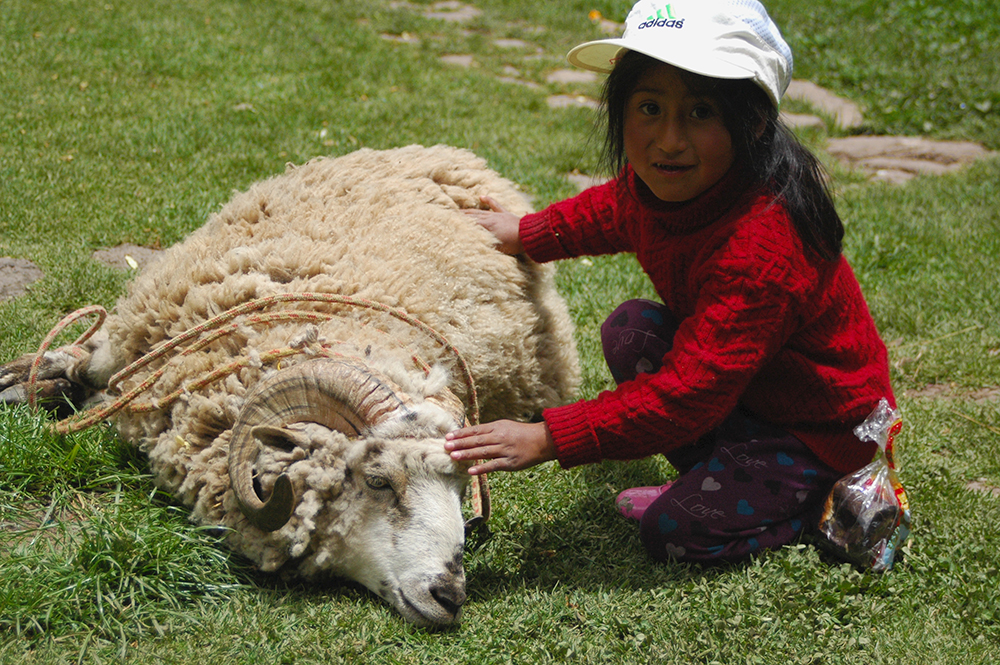Vendors at the Pisac Market were just setting up their stalls when I arrived at the main plaza this past Saturday morning ahead of a visit to the community of Amaru. Currently on an inspection trip to Cusco, I was going with the translator, Pilar, into the mountains east of Pisac to participate in a textile demonstration and lunch organized by the comunity based tourism initiative Tierra de los Yachaqs.
Traditional Textiles with Tierra de los Yachaqs
Amaru is one of eight communities that form a coalition called Tierra de los Yachaqs, an initiative that allows local people to participate in the very same tourism industry that has transformed the Cusco region. Aracari first started arranging visits in 2011 when Tierra de los Yachaqs first began in support of responsible tourism in Peru.
A window into tural Life in the Sacred Valley
Before my visit, I had mentioned Amaru to several people I’d met who live in the Valley, but none of them seemed to know the community because it is tucked away in the Andes, about 20 minutes away from Pisac. Quechua is the common language of the inhabitants of Amaru (hence the translator), and most families work in agriculture and animal domestication. The initiative gives many of the 200 families of Amaru a chance to earn extra income by offering tours that teach visitors about an aspect of their culture, like weaving, which they have chosen. Trained local guides are accompanied by a translator during the visit, but they are the ones who lead and design the tour.
Arriving at Amaru
After a bumpy but scenic ride along a narrow, dirt road, Pilar and I arrived at Amaru and the workshop where we’d be participating in the textile demonstration. As I entered a small opening in a stone wall that was decorated with a string of flowers, a woman approached me and reached towards my head with her clenched hand. I was somewhat confused until I saw white rose petals fluttering about me, immediately followed by the approach of another woman who hung a string of pink flowers around my neck. This, Pilar explained, was the floral welcoming, a tradition in Amaru to greet guests into their community.
A community welcome
Each woman humbly introduced herself with her name and a greeting, and then, to my surprise, they brought out garments for me that matched those they were wearing. They wrapped a colorful, embroidered skirt about my waist and draped a woven shawl over my shoulders, topping the outfit off with a round, velvet hat adorned with a yellow, felt fringe. I looked a bit clumsy wearing this attire with my jeans and sneakers and a camera strapped across my chest, but I found it to be a lovely gesture that made me feel more connected to the women and mildly less foreign. The hat also shaded my eyes and cheeks from the sharp rays of the sun that is incredibly strong in the Andes. Having ignored previous advice to bring a hat along with me to Cusco, I was thankful to find relief from squinting even if I looked a bit silly compared to the women who wore it so naturally atop their long, black braids.
Weaving demonstration with Tierra de los Yachaqs
The ladies who would lead the weaving demonstration left Pilar and I for a few minutes to relax and have tea of natural herbs like muña, which is a type of Andean peppermint that is good for altitude and more fragrant than mate de coca. A little girl named Maria joined us and pointed out the different herbs, saying their names. Maria, like most children, learns in both Spanish and Quechua at school, and she moved fluidly between both languages, speaking with us in Spanish and her mother and the women in Quechua.
K’intuy ritual to Mother Earth
After tea, Pilar and I went with the guides to perform the ritual K’intuy, an offering of coca leaves to the Pachamama, mother earth, and the Apus (high mountains that are revered as gods) before picking plants we’d use for the dyes.
We sat on the ground as they opened a cloth with coca leaves that Valentina, the main guide, and Rosimlinda began to gather in little bundles. She handed one to me and to Pilar who translated for Valentina, explaining that I could blow on the leaves and offer them to the mountains of my home. Coming from New York City, the closest thing to mountains that I could really think of are the skyscrapers, the new Freedom Tower and the Empire State Building, which are certainly not natural, but, in my opinion, can be as staggering and humbling as mountains when you stand at their bases. So I blew on my leaves in the name of my ‘mountains’, and we buried them for the Pachamama and the Apus.
Trying coca leaves
Then, we chewed the coca leaves for energy before plucking different plants to be used for dying the wool. Valentina explained the colors they produced, indicating which ones also had medicinal value. I tried to remember the many names, but the Quechua was not something I could pick up quickly. It is not like any language I’ve ever heard, which made the experience more intriguing to me.
We returned to the workshop with our plants and entered a little structure where two small, black cauldrons bubbled on an open flame. Yarns of different colors were displayed on the table by the plants that produced the colors. Valentina indicated that I could put a plant that produces a rich, earthy green into the cauldron. I watched as she put her hands close to the flames and the seething water without flinching, a gesture that was natural to her, that was quotidian. She told me that the plant needed 15 minutes to boil in order to extract the color, so in the mean time, she would show me the next step in the process.
From sheep’s wool to yarn
One of the women, the mother of Maria, pulled a sheep into the workshop area by a thick rope and then two of them bound its legs. At first, this made me nervous, but as I watched Maria pet the sheep to calm it, I relaxed. The ladies brought out a knife and pulled on the thick wool (lana in Spanish) to begin cutting it. They waved me over to try cutting a piece myself, handing me the knife and indicating where I should make my cut. This was doubtless the closest I’d ever been to a sheep. I felt sorry that I had to take its wool, but as soon as I removed the small chunk, the ladies cheered quietly, unbound it and led it back to its corral. It was just for show, the women explained to me; they wanted me to see and participate in every part of the process.
Next, Valentina demonstrated how they wash the wool using only warm water and then let it dry before stretching it and removing any burs. Then, they spin the wool with wooden spindles. It took me a few tries, but I got the hang of it even if it took some laughs and several demonstrations from the ladies. After it is spun once, it is washed again and ready to be dyed.
We went to our cauldrons with the damp yarn, and Valentina dropped it into the water and stirred it with the plants, pulling it out to show me the light green color the yarn had already assumed. Then, they brought out minerals taken from the mountain that made the green darker, brighter and permanent. Valentine dipped half of the yarn to show me the difference. Once this part of the demonstration was done, we returned to the open area, where the weavings had been set up on display and some of the ladies were sitting weaving already.
Weaving
We approached two wooden rods in the ground that stood across from two others. With a ball of yarn attached to a string between the rods, I helped to start a base for weaving. I tossed the ball of yarn to a woman across from me, and in this way, we made tight loops of wool that could later be used to make a weaving.
In Amaru, the weavers teach their children from a young age until they reach the point that they can produce the brilliantly intricate designs that were on display on the grass in the workshop area. One of the women sat with threads pulled taught as she wove a thin belt that had a different design on each side and was adorned with little, white beads on the edges. It was the same belt used to fasten the round hats and some other garments. Young girls (or boys) would make these belts as the first advance toward weaving, Valentina explained.
Next, we turned to see a larger and slightly more complicated design. Weavers with experience can design by memory, without any guide, some able to recall up to 50 designs. We continued to a larger weaving, and Valentina explained that each weaver had her own designs, and the one we were looking at represented paths in the Urubamba Valley to reach Amaru. They invited me to see their collection of works, which they had displayed and were for sale, all made by hand. Each had the creator’s name labeled on it to know whose design it was.
Local lunch in Amaru
As the demonstration wound down, the ladies disappeared into a small kitchen to prepare lunch. Having been a bit sick, I was eager to eat a real, home cooked meal, and I was not disappointed. We had a potato appetizer that was like a large croquette, with red pepper and scallions accompanied by a salad of finely chopped rocoto, onion, celery, and yellow pepper. Then, we had chupe de quinua, a soup with carrots, parsley, potatoes and of course, quinoa that is light and refreshing. Then, we had the plato del fondo, or the main dish, which was a steamed veggie side with another potato and savory corn cakes. As a vegetarian, they modified the dish for me, which otherwise had meat that looked to me like cuy, or guinea pig, which is extremely popular in Cusco.
Before leaving, I thanked the ladies and took some pictures with them. I felt a pang of remorse at having to remove the garments they had leant me; in the short time I’d become pretty comfortable in the clothes! After a farewell that involved grasping shoulders, Pilar and I left the workshop and the ladies behind.
As I looked over the Valley on our equally rough ride back down to Pisac, I had the sense that I’d experienced something special that few people get the chance to see when they visit Cusco. I won’t easily forget my afternoon with the weavers of Amaru, and I’m thankful to them for welcoming me into their world, even if the flower ritual startled me at first!
I’m particularly grateful that the families of Amaru have decided to open their doors to visitors interested in a more credible, hands-on experience of Andean life. The risk of tourism is that culture and quality can be diluted and mass-produced for a market of eager travelers who go searching for a meaningful, immersive experience and end up with a cheap souvenir or a gaudy picture. It is for this reason that those of us at Aracari dig around for programs like Tierra de los Yachaqs that empower and benefit communities, preserve their culture and act as unique cultural exchange programs, so that we can offer those who travel with us the authenticity that they desire and deserve.
Visiting local communities with Tierra de los Yachaqs
Aracari offers a number of different tours with five of the communities involved in Tierra de los Yachaqs, two of them in Amaru. For information on visiting, contact us today.

